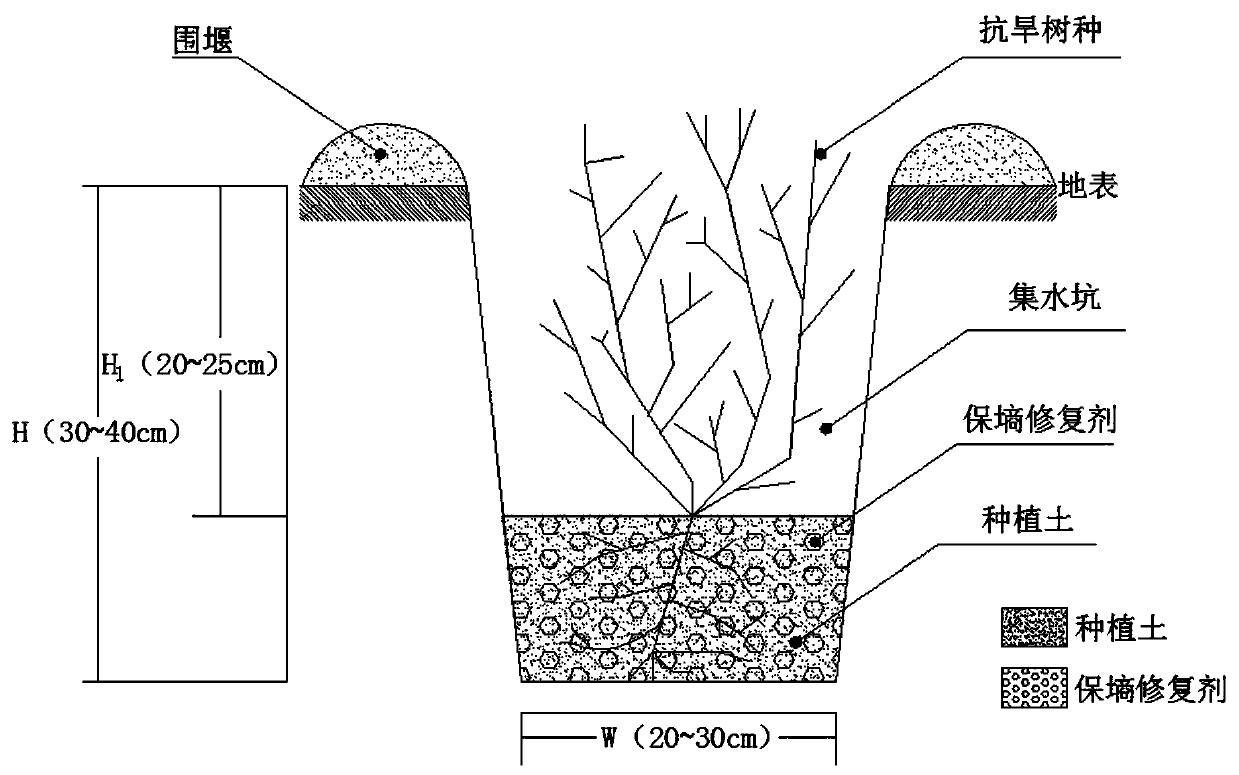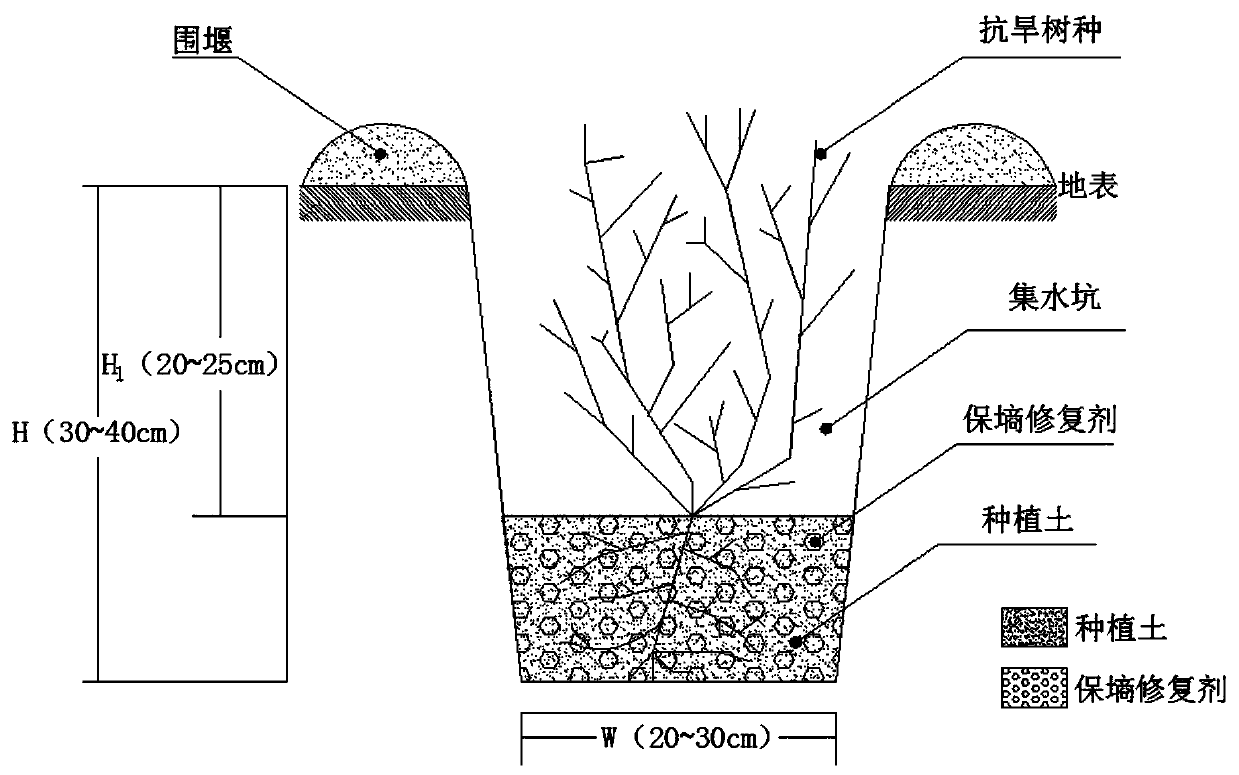Non-irrigation forestation revegetation method for arid desert areas
A vegetation reconstruction without irrigation technology, applied in the field of desert vegetation reconstruction, can solve the problems of soil wind and sand and salinization, high afforestation cost, and poor afforestation conditions, and achieve high survival rate and growth, low afforestation cost, and extensive The effect of applicability
- Summary
- Abstract
- Description
- Claims
- Application Information
AI Technical Summary
Problems solved by technology
Method used
Image
Examples
Embodiment 1
[0017] The native Haloxylon in the arid desert area is used as the planting object. In order to ensure the quality of the saplings, 2-year-old Haloxylon seedlings are selected. The root system is not damaged or split, and the diseased and insect seedlings and the disabled seedlings are used for afforestation.
[0018] Excavate the planting hole, the diameter of the tree hole is 25 centimeters, and the planting hole is 35 centimeters deep, and in the planting hole, apply the moisture conservation restoration agent that natural sodium-based bentonite and weathered coal mix, according to the weight ratio of natural sodium-based bentonite and weathered coal is 2.5: 1 for application, specifically: 500g of natural sodium-based bentonite and 200g of weathered coal, the fineness of natural sodium-based bentonite slag and weathered coal slag is above 100 mesh, and mixed with the soil evenly before planting; Haloxylon in the planting hole The planting depth is 10-15cm, backfill with fin...
Embodiment 2
[0021] The original red willow in the arid desert area is used as the planting object. In order to ensure the quality of the saplings, 2-year-old red willow seedlings are selected. The root system is free from damage, splitting, pests, and disabled seedlings are used for afforestation.
[0022] Excavate planting hole, the diameter of tree hole is 25 centimetres, and planting hole is 40 centimeters deep, and in planting hole, apply the soil moisture conservation restoration agent that natural sodium-based bentonite and weathered coal mix, be 2.5 according to natural sodium-based bentonite and weathered coal weight ratio: 1 for application, specifically: 600g of natural sodium-based bentonite and 240g of weathered coal, the fineness of natural sodium-based bentonite slag and weathered coal slag reaches more than 100 mesh, and it is evenly mixed with the soil before planting; plant tamarisk in the planting hole The depth is 15-20cm, backfill with fine soil, and step on the roots a...
PUM
 Login to View More
Login to View More Abstract
Description
Claims
Application Information
 Login to View More
Login to View More - R&D
- Intellectual Property
- Life Sciences
- Materials
- Tech Scout
- Unparalleled Data Quality
- Higher Quality Content
- 60% Fewer Hallucinations
Browse by: Latest US Patents, China's latest patents, Technical Efficacy Thesaurus, Application Domain, Technology Topic, Popular Technical Reports.
© 2025 PatSnap. All rights reserved.Legal|Privacy policy|Modern Slavery Act Transparency Statement|Sitemap|About US| Contact US: help@patsnap.com



